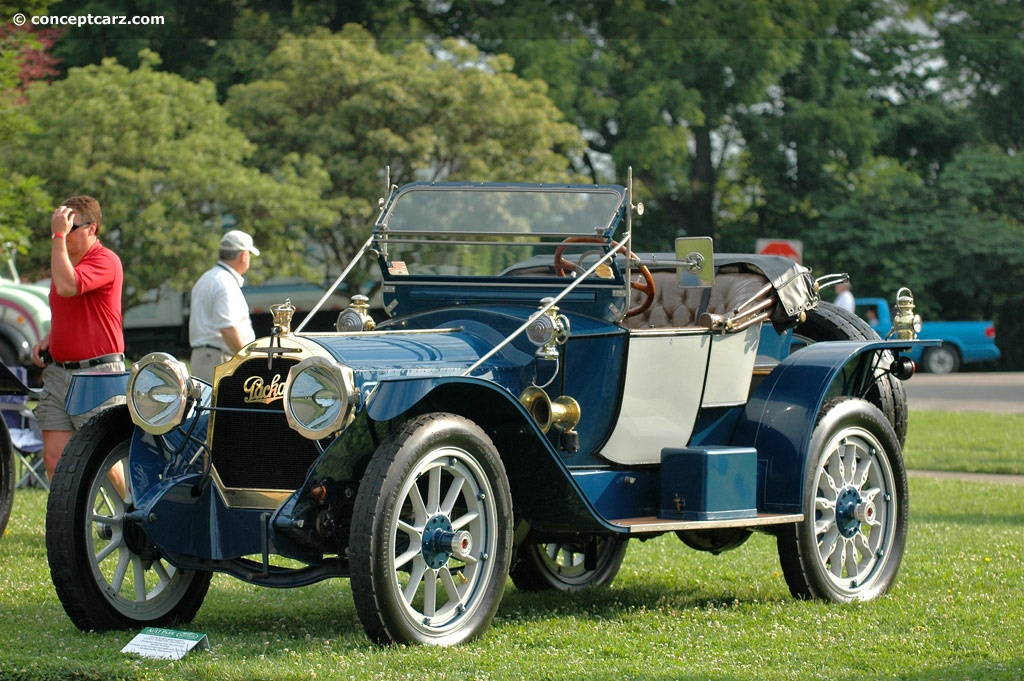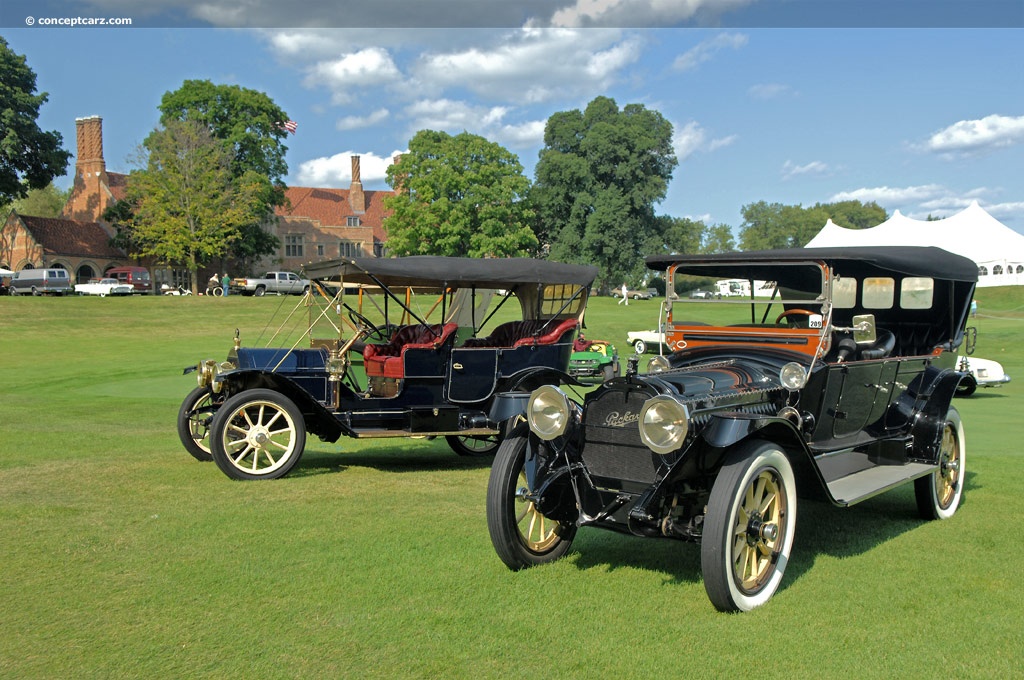James Ward Packard purchased one of Alexander Winton's first automobiles. After finding several shortcomings in his new 1898 Winton, Mr. Packard told Mr. Winton about them. Mr. Winton did not agree with Mr. Packard's finding and told him that if he wanted his ideas incorporated in an automobile he should build it himself. With the help of his brother William and two former Winton employees (George Weiss and William Hatcher) Packard built his own automobile in November of 1899, followed by four more vehicles before the close of the year. 47 examples of a new 'Model B' were built in 1900 under the auspices of the New York and Ohio Company, a subsidiary of the brothers' Packard Electric Company, which manufactured transformers and electric lighting equipment. 
Runabout
View info and historyThe early Packards were single-cylinder runabouts with a two-speed planetary transmission with chain drive, and the automatic spark advance was a novel feature for the time. The brothers formed the Ohio Automobile Company in their hometown of Warren, Ohio, on September 10th of 1900. Soon after they adopted the slogan 'Ask the Man Who Owns One.' A Detroit businessman named Henry B. Joy acquired the entire issue of 2,500 shares in 1902, at which time the firm became the Packard Motor Car Company. A year later, the company moved to Detroit where a new factory, designed by architect Albert Kahn, was being built.Four-cylinder cars were added to the lineup in 1903, and by 1907 the Model 30 had been introduced which helped establish the Packard's reputation as builders of luxury automobiles. They would become one of the 'Three Ps' (along with Peerless and Pierce-Arrow) of prestige American automobile manufacturing and the only one of the three to survive the Depression. Their survival was attributed to diversification into medium-priced cars. After World War II, Packard continued to lead the American luxury market and was outsold by Cadillac only once before 1950.
Touring
Chassis #: 63228
View info and history
Auction entries : 1The first Packard six-cylinder engine appeared in April 1911 in the Model 48, named after the rated horsepower of the 525 cubic-inch T-head powerplant. The engine offered a full 74 bhp at 1,720 and Packard advertised that it was capable of reaching '60 miles per hour in 30 seconds from a standing start.' It used Packard's float-feed carburetor with automatic mixture control and a Bosch dual ignition system. Prices began at $5,000 and reached nearly $7,000. Wheelbase sizes measured from 121.5- to 139-inches and thirteen factory body styles were available. During its introductory year, nearly 1,350 examples were sold.The new 1913 Model 2-48 was introduced in mid-1912, offering eight additional horsepower, electric headlamps, and improved lubrication. The battery and toolbox were moved from the running boards to under the driver's seat, where the fuel tank previously resided, now resting in the rear. Early in 1913, the Model 3-48 was introduced with left-hand drive and a combination starter-generator. This model is sometimes described as the '1148' and the 'New 48.' The 4-48 was introduced in February 1914, having a lengthened wheelbase to 144 inches and modifications to the engine. The displacement remained the same, but now had an L-head configuration, and instead of three blocks of two cylinders it now had two blocks of three and seven main bearings. Production continued for five months, through June 1914, with 441 examples built. Prices ranged from $4,750 to $6,510.
by Daniel Vaughan | Apr 2020

Runabout
View info and history

Touring
Chassis #: 63228
View info and history
Auction entries : 1
by Daniel Vaughan | Apr 2020
Similar Automakers
Similarly Priced Vehicles
1914 Packard Series 4-48 Vehicle Profiles
Recent Vehicle Additions
Performance and Specification Comparison
Price Comparison
$3,350 - $5,150
$4,050 - $5,400
$4,650 - $6,100
Model 48 Specification Comparison by Year
Year
Production
Wheelbase
Engine
Prices
Related Automotive News

The Only Studebaker Lark Daytona 500 Race Car In Europe Up For Auction
One of four Studebaker Lark Daytona 500 race cars goes to auction at Autosport International
The only example in Europe, raced at high profile historic races
For auction with an estimate of £100,000 to £130,000 on 12th January
An incredibly rare...

HIGHLY COLLECTIBLE LHD CLASSICS FOR AUCTION AT THE UK'S BIGGEST CLASSIC CAR SHOW
More than 120 highly collectible classic and modern cars on offer in Silverstone Auctions final sale of the year.
The auction takes place at the UKs biggest classic car show, the NEC Classic Motor Show on the 12th and 13th November...

HONDA CIVIC TYPE R MAKES NORTH AMERICAN DEBUT AT THE 2016 SEMA SHOW
Oct 28, 2016 - TORRANCE, Calif.
Civic Type R headlines Civicpalooza display featuring more than nine tuned, accessorized and custom-built Civic Sedans, Coupes and Hatchbacks
10th Generation Civic Racing vehicles include 2016...

THE McLAREN F1
FOR THE DRIVER VITALLY – AS IN ONE OF McLARENS WORLD CHAMPION RACING CARS – DRIVER AND VEHICLE BECOME ENTIRELY AS ONE
The primary design consideration for the McLaren F1 has been to make it without reserve a drivers car, an extremely high-performance...

BMW's 'BATMOBILES' SET FOR 19th ANNUAL AMELIA CONCOURS
Scheduled to appear in the 19th Annual Amelia Concours BMW 3.0 CSL batmobile class are not only the 1975 Sebring 12 Hour and 76 Daytona 24 winners, but Alexander Calders 1975 Le Mans 3.0 CSL with his trademark signature on the left rear fender.
...




































